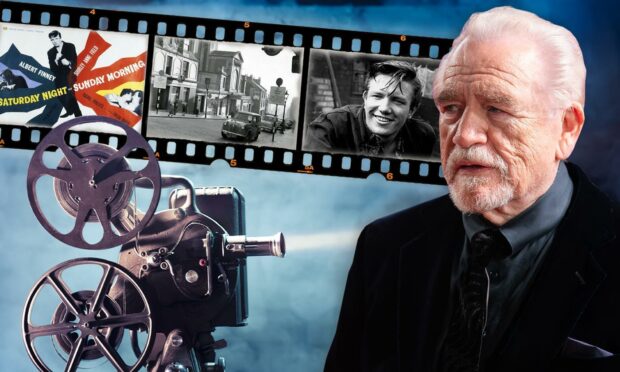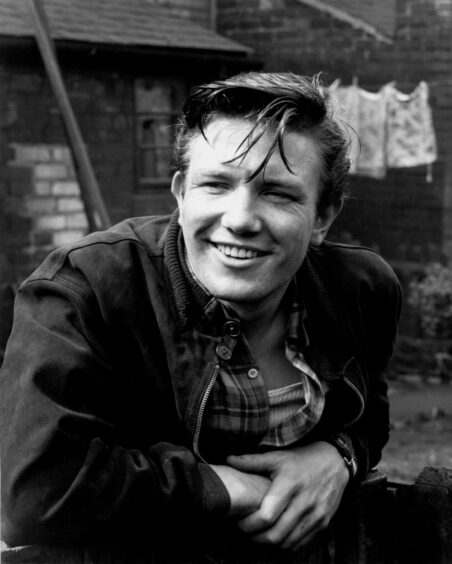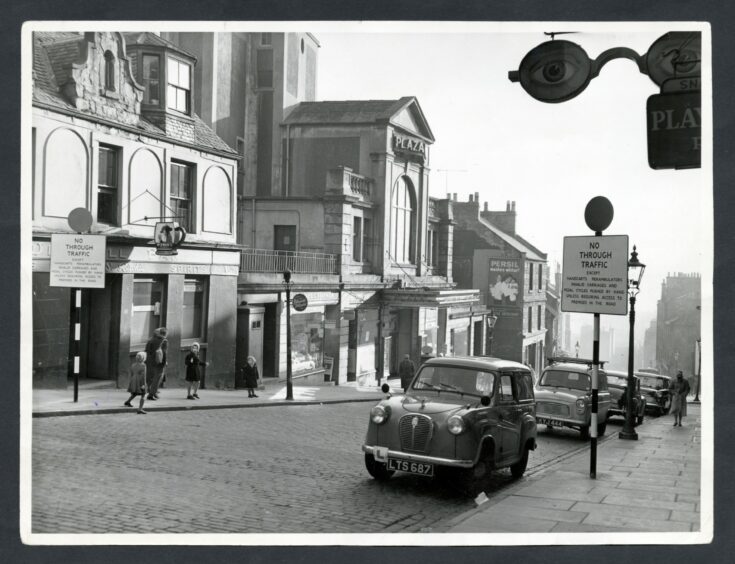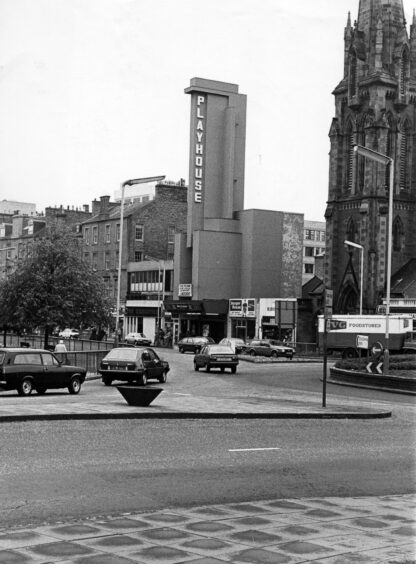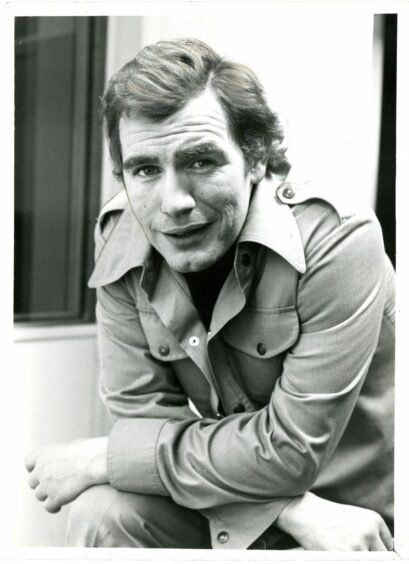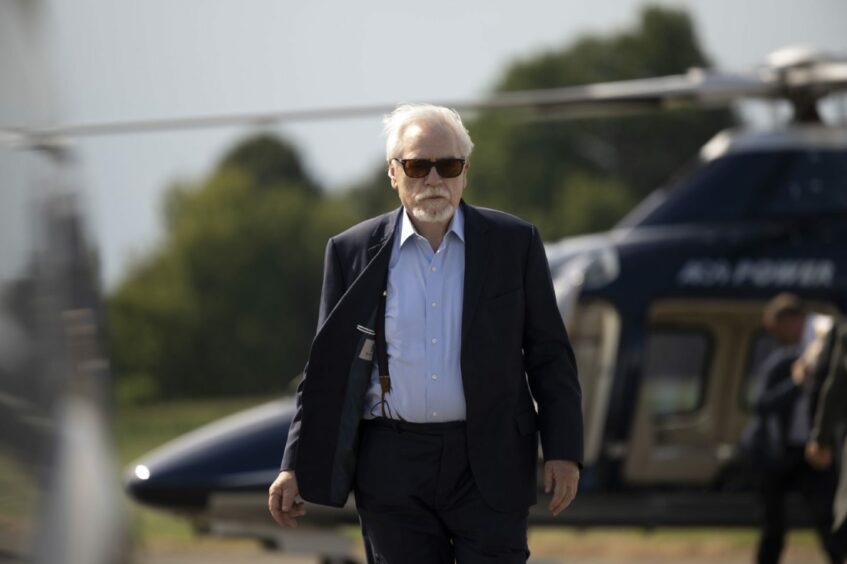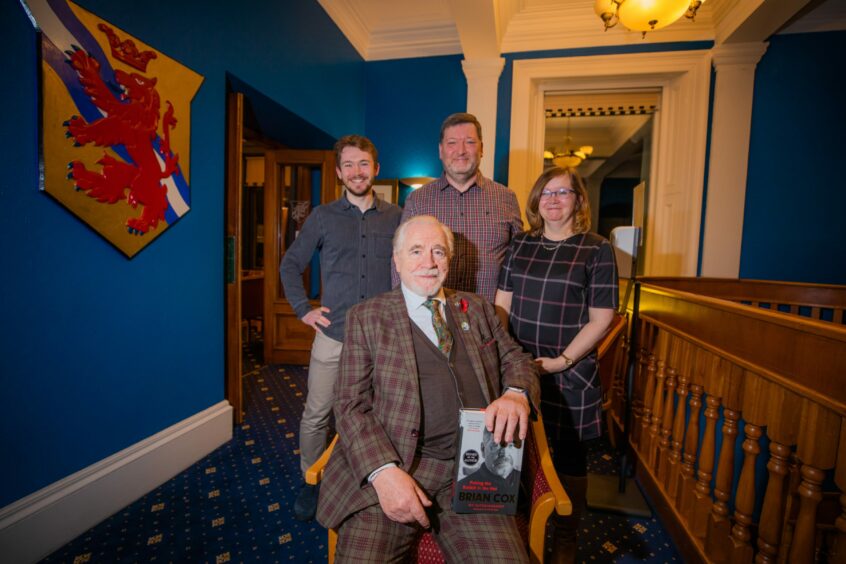It was the “eye-opening” Hilltown cinema trip that convinced Brian Cox that he could become a star of the silver screen.
Cox took his seat and watched working-class hero Albert Finney in Saturday Night and Sunday Morning in 1960 and said his performance “radically changed me”.
At the peak of film-going there were 25 cinemas in Dundee.
Cox was a regular at every single one.
The Succession star’s tell-all book, Putting The Rabbit In The Hat, described how that afternoon trip to the Hilltown Plaza changed everything.
Cox writes: “I preferred American movies.
“These days I like British films, especially the Ealing comedies, but back then the likes of Doctor in the House, Dirk Bogarde and Kenneth More were a little middle-class for my tastes.
“They were too far away from my own experience to resonate; not far enough to give me the same exotic thrill I got from A Place in the Sun or A Streetcar Named Desire.
“Even The Bridge on the River Kwai was a bit on the formal side for me.
“This was a problem, because even at that young age I was eyeing up a future as one of those guys on the screen although I hadn’t the foggiest idea how to go about it.
“How does a wee kid from Dundee get to be in films?
“But then one afternoon I went to the Plaza Cinema in Hilltown to see Saturday Night and Sunday Morning, and it changed me.
“And I mean really, radically changed me at a cellular level.
“Because I looked at Albert Finney, who was working-class English, in a film that wasn’t all about the lives of posh folk in drawing rooms, or struggling nobly in far-off places, or having faintly amusing high-jinks on hospital wards; it was all about working-class people – people like us.”
Cox said this was “proper eye-opening stuff”.
“This was a transformative moment,” he said.
“I thought, My God, that could be me. If that guy up there can do it, I can do it too.”
He described screen legend Finney as “the standard bearer” and “the vanguard”.
Fell asleep
Here was a time when Cox would play truant from school to go to the cinema.
But during one trip to Green’s Playhouse he fell asleep and woke up to find he had been reported missing to the police by his frantic elder sister.
He went to see Giant starring James Dean, Elizabeth Taylor and Rock Hudson and loved it so much that he stayed on at the cinema to watch it again.
The trouble was that this 1956 classic is 197 minutes long.
Cox nodded off.
He woke up to find himself alone and in darkness.
Managing to find his way out of the auditorium, he set eyes on a clock.
It was 4am.
Cox said: “At least I had the wherewithal to unlock, escape the cinema and flee into the street, where I looked fearfully this way and that, gulping hard.
“Talk about frying pans and fires.
“Sure, the cinema was spooky, but Dundee’s darkened, tram-lined streets at night were, if anything, even more foreboding.
“Next thing you know I was panic-running – running, running – when suddenly I came upon a police box, one of the old Tardis types, at Nethergate, which was at the bottom of Reform Street.”
A voice from within the police box asked him where he was going.
“Well, I should be home, but I was at the pictures and fell asleep.”
The Tardis said: “Are you by any chance Brian Cox?”
“Yes,” he replied.
“And is your sister Irene Cox?”
“Yes.”
“Aye, well, she’s looking for you.
“She’s crazy-mad. She’s beside herself. You’d better get home.”
Cox admitted it was a “lively homecoming”.
“But that was me and the cinema,” he said.
“I was obsessed.”
Message boy aged 14
It was at St Michael’s Junior Secondary School that Cox’s love of theatre would be encouraged and he took a job as a message boy at Dundee Rep aged 14.
The 15-year-old stepped on to the Dundee Rep stage for the first time aged 15 in 1961, playing the role of a waiter in AA Milne’s The Dover Road.
Dundee Rep at that time was located in Forester’s Hall in Nicoll Street and put on 26 productions a year before a fire burned down the building in June 1963.
Cox was having a staple lunch of bridie and chips at Wilson’s on Reform Street when he heard sirens.
Little did he know it would effectively signal the end of his time at Dundee Rep.
The building was completely destroyed apart from the pictures of the acting company which were still standing in the wreckage of the foyer.
The cast were able to get a temporary location for a few weeks in a local theatre before they mounted two productions in a tent in the city’s Camperdown Park.
“I never saw it again, the Rep,” said Cox.
“They moved to another place up in the Lochee Road, and stayed there until they relocated to what is the current building on Tay Street, which is a beautiful little theatre.
“All of which happened without me, because the silver lining in the whole terrible fire episode – at least as far as I was concerned personally – was that I had moved on.”
Cox said the burning down of Dundee Rep marked a chapter of his life closing and he went off to study acting in London until he was 19.
He made his first television appearance in an episode of The Wednesday Play in 1965.
The rest is history.
He went on to become an accomplished Shakespearean actor, spending seasons with both the Royal Shakespeare Company and the National Theatre.
Cox enjoyed theatre and film successes in America too, starring as the original (and best) Hannibal Lecter in Manhunter in 1986.
He moved to the US permanently in 2008 to pursue movies, settling in Manhattan.
The move led to a number of high-profile roles in blockbusters including a well-loved performance in Troy playing Agamemnon and roles in the X Men series.
Cox is now best known for his role as media mogul Logan Roy in the scathingly satirical Succession for which he won a Golden Globe in 2020.
Putting The Rabbit In The Hat by Brian Cox is published by Quercus, priced £20.
More like this:
Peter Riegert in Succession: Will Local Hero lock horns with Brian Cox’s Logan Roy?
Green’s Playhouse: Remembering the magic of Dundee ‘super-cinema’
How treading the boards in Dundee helped Stan Laurel chase his dreams
